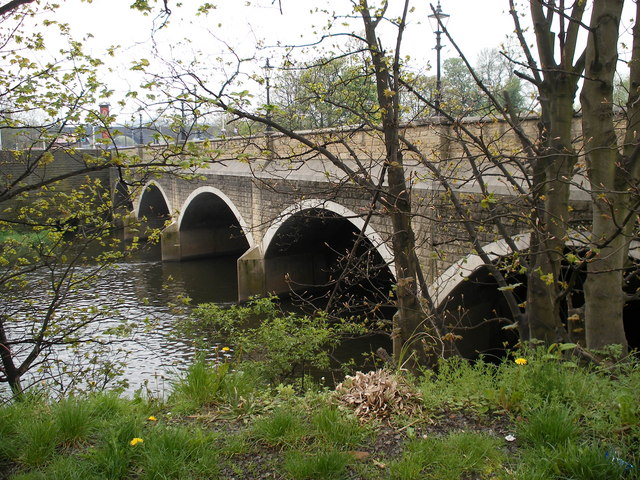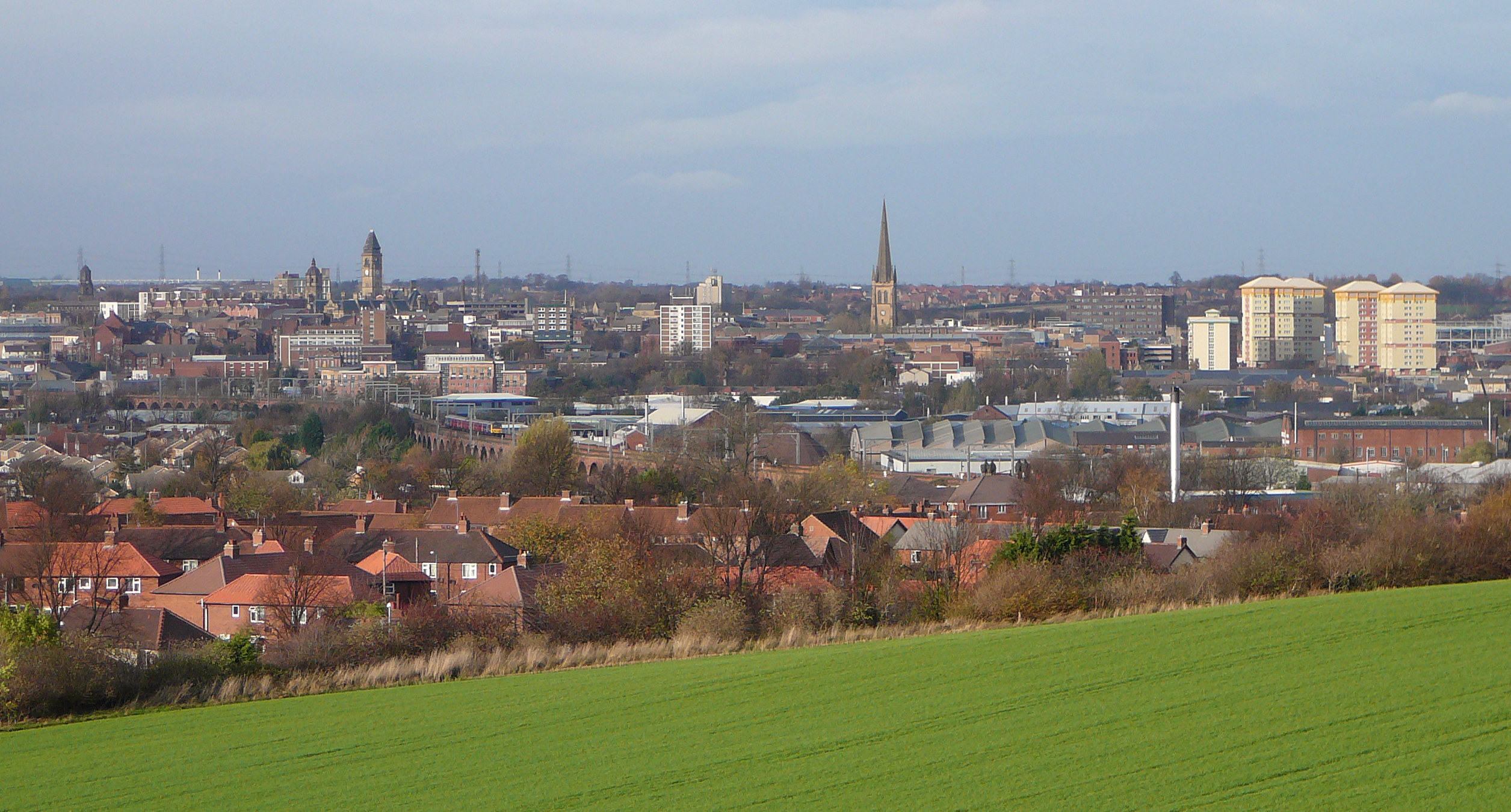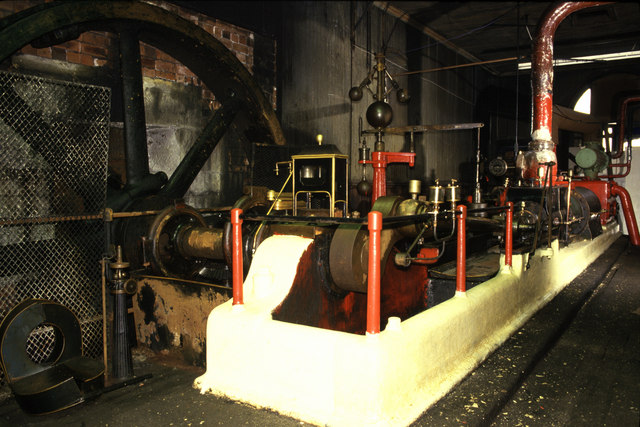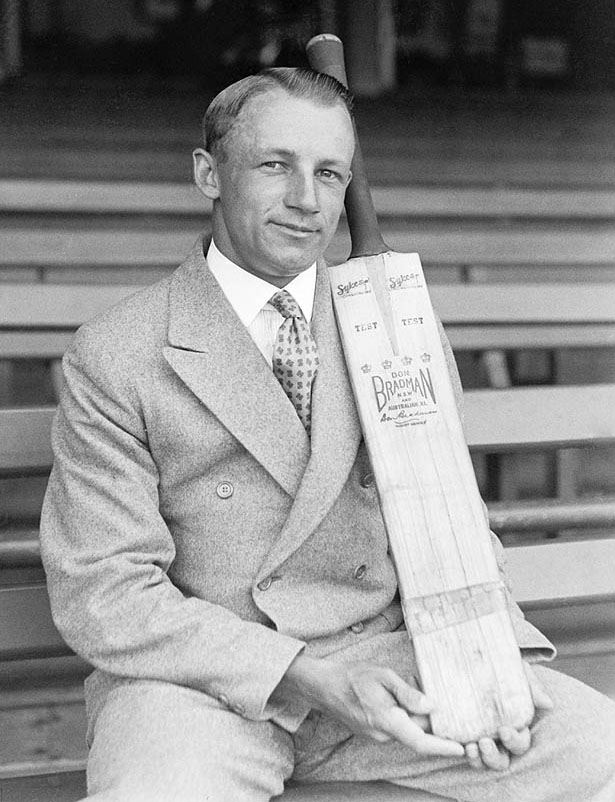|
Horbury
Horbury is a town in the City of Wakefield in West Yorkshire, England. Historically in the West Riding of Yorkshire, it is situated north of the River Calder about three miles (5 km) south west of Wakefield and two miles (3 km) to the south of Ossett. It includes the outlying areas of Horbury Bridge and Horbury Junction. At the 2001 census the Horbury and South Ossett ward of Wakefield Metropolitan District Council had a population of 10,002. At the 2011 census the population was 15,032. Old industries include woollens, engineering and building wagons for the railways. Horbury forms part of the Heavy Woollen District. History Toponymy The name Horbury is attested in 1086 as ''(H)orberie''. It is derived from Old English ''horu'' 'dirty land' and ''burh'' (in its dative form ''byrig''), which translates as 'filthy fortification' or 'stronghold on muddy land'. Other spellings include Orberie, Horbiry and Horberie. The name possibly referred to a fortification near an o ... [...More Info...] [...Related Items...] OR: [Wikipedia] [Google] [Baidu] |
Horbury Bridge Over The River Calder - Geograph
Horbury is a town in the City of Wakefield in West Yorkshire, England. Historically in the West Riding of Yorkshire, it is situated north of the River Calder about three miles (5 km) south west of Wakefield and two miles (3 km) to the south of Ossett. It includes the outlying areas of Horbury Bridge and Horbury Junction. At the 2001 census the Horbury and South Ossett ward of Wakefield Metropolitan District Council had a population of 10,002. At the 2011 census the population was 15,032. Old industries include woollens, engineering and building wagons for the railways. Horbury forms part of the Heavy Woollen District. History Toponymy The name Horbury is attested in 1086 as ''(H)orberie''. It is derived from Old English ''horu'' 'dirty land' and ''burh'' (in its dative form ''byrig''), which translates as 'filthy fortification' or 'stronghold on muddy land'. Other spellings include Orberie, Horbiry and Horberie. The name possibly referred to a fortification near an ... [...More Info...] [...Related Items...] OR: [Wikipedia] [Google] [Baidu] |
Horbury Town Hall
Horbury Town Hall is a former municipal building in Westfield Road, Horbury, West Yorkshire, England. The structure, which is now used as business centre, is a locally listed building. History Following significant population growth, largely associated with the yarn spinning and cloth manufacturing industries, Horbury became an urban district in 1894. In this context the new civic leaders decided to procure a town hall: the site they selected, on the north-east side of Westfield Road, was occupied by a private house rented by a builder, William Thickett. The foundation stone for the new building was laid by the chairman of the council, Joshua Harrop, on 30 July 1902. It was designed by Walter Hanstock & Son in the Renaissance style, built by Henry Fallas & Sons in buff brick with stone dressings at a cost of £6,100 and was officially opened by Harrop on 2 October 1903. The design involved a symmetrical main frontage with three bays facing onto Westfield Road; the central bay f ... [...More Info...] [...Related Items...] OR: [Wikipedia] [Google] [Baidu] |
City Of Wakefield
The City of Wakefield is a local government district with the status of a city and metropolitan borough in West Yorkshire, England. Wakefield, the largest settlement, is the administrative centre of the district. The population of the City of Wakefield at the 2011 Census was 325,837. The district includes the ''Five Towns'' of Normanton, Pontefract, Featherstone, Castleford and Knottingley. Other towns include Ossett, Horbury, Hemsworth, South Kirkby and Moorthorpe and South Elmsall. The city and district are governed by Wakefield Metropolitan District Council from headquarters in County Hall. In 2010, Wakefield was named as the UK's third most musical city by PRS for Music. Economy The economic and physical condition of several of the former mining towns and villages in Wakefield District have started to improve due to the booming economy of Leeds – and an increase in numbers of commuters to the city from the sub-region – and a recognition of undeveloped assets. For i ... [...More Info...] [...Related Items...] OR: [Wikipedia] [Google] [Baidu] |
Ossett
Ossett is a market town in the City of Wakefield metropolitan borough in West Yorkshire, England. Historically part of the West Riding of Yorkshire, it is situated between Dewsbury, Horbury and Wakefield. At the 2011 Census, the population was 21,231.https://www.nomisweb.co.uk/census/2011/ks101ew Census 2011 table KS101EW Usual resident population, West Yorkshire – Ossett BUASD, code E35000387 Ossett forms part of the Heavy Woollen District. History Toponymy The name ''Ossett'' derives from the Old English and is either "the fold of a man named Osla" or " a fold frequented by blackbirds". Ossett is sometimes misspelled as "Osset". In Ellis' ''On Early English Pronunciation'', one of the founding works of British linguistics, the incorrect spelling is used. The British Library has an online dialect study that uses the spelling. One new alternative theory is that it is the place where King Osbehrt died after receiving fatal wounds when fighting the Great Heathen Army of the Vi ... [...More Info...] [...Related Items...] OR: [Wikipedia] [Google] [Baidu] |
Wakefield (UK Parliament Constituency)
Wakefield is a constituency created in 1832, represented by Simon Lightwood of the Labour Party since 2022. Boundaries 1918–1950: The County Borough of Wakefield. 1950–1983: The County Borough of Wakefield, the Urban District of Horbury, and part of the Rural District of Wakefield. 1983–1997: The City of Wakefield wards of Horbury, Wakefield Central, Wakefield East, Wakefield North, Wakefield Rural, and Wakefield South. 1997–2010: The City of Wakefield wards of Wakefield Central, Wakefield East, Wakefield North, and Wakefield Rural, and the Metropolitan Borough of Kirklees wards of Denby Dale and Kirkburton. 2010–present: The City of Wakefield wards of Horbury and South Ossett, Ossett, Wakefield East, Wakefield North, Wakefield Rural, and Wakefield West. Latest boundary changes Parliament accepted the Boundary Commission's Fifth Periodic Review of Westminster constituencies which altered this constituency for the 2010 general election, removing all three rura ... [...More Info...] [...Related Items...] OR: [Wikipedia] [Google] [Baidu] |
Wakefield
Wakefield is a cathedral city in West Yorkshire, England located on the River Calder. The city had a population of 99,251 in the 2011 census.https://www.nomisweb.co.uk/census/2011/ks101ew Census 2011 table KS101EW Usual resident population, West Yorkshire – Wakefield BUASD, code E35000474 The city is the administrative centre of the wider City of Wakefield metropolitan district, which had a population of , the most populous district in England. It is part of the West Yorkshire Built-up Area and the Yorkshire and The Humber region. In 1888, it was one of the last group of towns to gain city status due to having a cathedral. The city has a town hall and county hall, as the former administrative centre of the city's county borough and metropolitan borough as well as county town to both the West Riding of Yorkshire and West Yorkshire, respectively. The Battle of Wakefield took place in the Wars of the Roses, and the city was a Royalist stronghold in the Civil War. Wake ... [...More Info...] [...Related Items...] OR: [Wikipedia] [Google] [Baidu] |
West Yorkshire
West Yorkshire is a metropolitan and ceremonial county in the Yorkshire and Humber Region of England. It is an inland and upland county having eastward-draining valleys while taking in the moors of the Pennines. West Yorkshire came into existence as a metropolitan county in 1974 after the reorganisation of the Local Government Act 1972 which saw it formed from a large part of the West Riding of Yorkshire. The county had a recorded population of 2.3 million in the 2011 Census making it the fourth-largest by population in England. The largest towns are Huddersfield, Castleford, Batley, Bingley, Pontefract, Halifax, Brighouse, Keighley, Pudsey, Morley and Dewsbury. The three cities of West Yorkshire are Bradford, Leeds and Wakefield. West Yorkshire consists of five metropolitan boroughs (City of Bradford, Calderdale, Kirklees, City of Leeds and City of Wakefield); it is bordered by the counties of Derbyshire to the south, Greater Manchester to the south-west, Lancash ... [...More Info...] [...Related Items...] OR: [Wikipedia] [Google] [Baidu] |
River Calder, West Yorkshire
The River Calder is a river in West Yorkshire, in Northern England. The Calder rises on Heald Moor in Lancashire close to the source of another river with the same name, and then flows east into West Yorkshire through green countryside, former woollen-mill villages and towns before joining the River Aire near Castleford. The river's valley is generally known as the Calder Valley. The name Calderdale usually refers to the large urban and rural borough (centred on Halifax) through which the upper river flows. The lower reaches flow through the boroughs of Kirklees (based on Huddersfield) and Wakefield. However, the river does not flow through the centres of Halifax and Huddersfield, which are on the Calder's main tributaries, Hebble Brook and the River Colne respectively. The only large town centres through which the Calder flows are Brighouse, Mirfield, Dewsbury and the city of Wakefield. The river itself is only navigable in short sections, but these sections are connecte ... [...More Info...] [...Related Items...] OR: [Wikipedia] [Google] [Baidu] |
Graveship
Graveship ( ang, grafansċip) was a subdivision of a medieval estate each was under a grave who was selected every year. An example is the manor of Wakefield, which was managed with 12 graveships. The OED defines a graveship as: "In the West Riding of Yorkshire: a district, in some instances a subdivision of a large parish, in others comprising a number of parishes; so called as having formerly been administered by a grave or a body of graves." Grave The term has ancient origins, Morehouse in "The History and Topography of the Parish of Kirkburton and of the Graveship of Holme" defines Grave (prepositus in Latin deeds) as probably derived from the Anglo-Saxon Lenere or the German Graf (Middle-German ''grave'') and in that sense means an officer, whose duty it was to collect the lord’s rents and/or execute administrative orders in the graveship. In most of England, the official would have been termed a reeve but in the manor of Wakefield, he was termed a grave and was selected at ... [...More Info...] [...Related Items...] OR: [Wikipedia] [Google] [Baidu] |
Wakefield Metropolitan District Council
Wakefield Metropolitan District Council, also known as Wakefield Council, is the local authority of the City of Wakefield in West Yorkshire, England. It is a metropolitan district council and provides a full range of local government services including Council Tax billing, libraries, social services, processing planning applications, waste collection and disposal, and it is a local education authority. Wakefield is divided into 21 wards, electing 63 councillors. A third of the council is elected for three of every four years. The council was created by the Local Government Act 1972 and replaced the Wakefield City Council of the County Borough of Wakefield and several other authorities. Since 1974 Wakefield has held borough and city status and from this time would use the full title of the authority on all publications, signage, council vehicle fleet and documents, however from around 2005, like many other local authorities doing so at the time, the authority dropped the full title ... [...More Info...] [...Related Items...] OR: [Wikipedia] [Google] [Baidu] |
Crigglestone
Crigglestone is a village and civil parish in the City of Wakefield in West Yorkshire, England. It is recorded as "Crigeston" (along with neighbouring "Orberie") in the Domesday Book. The civil parish had a population of 9,271 at the 2011 Census. On 29 July 1941, an explosion occurred at the Crigglestone Colliery, killing 21 men. Since the 1970s, the site of the colliery has become an industrial estate on the western side, giving way to residential housing on the eastern side and a public amenity (Betty Eastwood Park) to the south. This area has two Anglican churches: the Church of St James, Chapelthorpe, and the Church of St John the Divine, Calder Grove. Retrieved 23 April 2014 Crigglestone onc ... [...More Info...] [...Related Items...] OR: [Wikipedia] [Google] [Baidu] |
William Sykes (businessman)
William Sykes (1852–1910) was an English businessman. Sykes was just 23 when, against the advice of his father he married and then with his own and his new wife's savings purchased a saddler business in Horbury, England, in about 1874. He married Louisa Abstemia Crabtree (1850-1928) in 1874. The business prospered and a few years later added footballs to the other leather goods it was making. The Sykes Zig-zag branded football was used in many leading events including the FA Cup finals of 1936, 1937, 1939 and 1946. Sykes subsequently expanded his business by dealing in cricket bats, before moving into their manufacture. Donald Bradman, widely acknowledged as the greatest Test batsman of all time, used bats produced by Sykes throughout his career. in 1929, shortly after Bradman scored the then highest First-Class innings of 340 while playing for New South Wales at the Sydney Cricket Ground The Sydney Cricket Ground (SCG) is a sports stadium in Sydney, Australia. It is used f ... [...More Info...] [...Related Items...] OR: [Wikipedia] [Google] [Baidu] |




